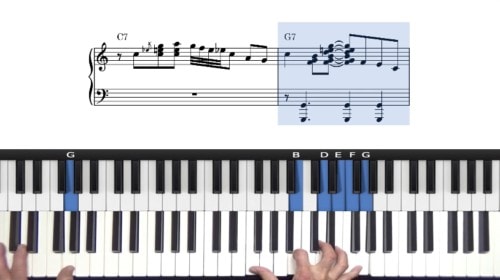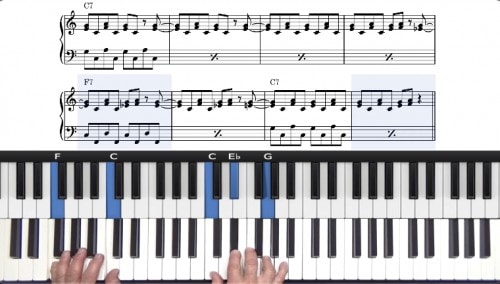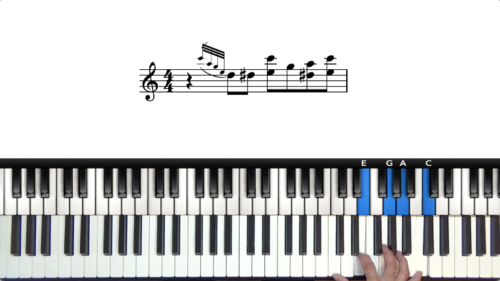New Orleans Piano Improvisation
Playing New Orleans piano requires that we perform several roles at once. In our left hand we create foundation of the harmony by outlining the chords, often voiced with large 10th intervals.
It’s our right hand that dazzles and in this lesson we will explore some important right hand principles and techniques to create that authentic New Orlean piano sound.
Voicing Chords With 5th On Each End
Generally speaking, we can voice our chords with the 5th at either end of the chord. This allows us to play around with the inner notes of the chord with great efficiency and very little movement in the hand.
Having our right hand in this position allows us to play both a chord and a melody at the same which is an important aspect of the New Orleans style.
Creating Trills & Tremolos
The way we trill the notes in our right hand is an important element of the New Orleans style and technique. Some players have a fast trills, others have a slow trill. The key is to achieve evenness and control in the note lengths to create a pleasing sound.
The Famous Riff
Jon demonstrates “The Famous Riff” which is heard throughout New Orleans Rhythm & Blues. We explore the construction of the riff and then apply it to a blues tune to demonstrate its application.
Turnarounds In New Orleans Blues
New Orleans piano players tend to pride themselves on their turnarounds and sometimes the ending of the song can be as long as the song itself and be comprised repeating turnaround variations.
Jon demonstrates a basic turnaround in C and we explore ways to embellish and enhance the progression with slurs and grace notes.
Lesson Downloads
-
Licks, Riffs, & Turnarounds File Type: pdf
-
“The Famous Riff” Application File Type: pdf
-
Common Blues Keys File Type: pdf
Practice Tips
-
Practice voicings chord with the 5th and each end and use your fingers to add the melodic details as Jon demonstrates.
-
Experiment with different trill speeds to find one that works best for you.
-
Aim for evenness in your trills and tremolos. You can choose how fast you want to trill, but the key is to create an even and controlled sound.
-
Learn and "The Famous Riff" in C, and transpose it into the keys of F, Bb, & G.
-
New Orleans tunes are most often played in keys where the minor 3rd lands on a black note. This makes improvisation and melodic development easier in the right hand.
-
To play the New Orleans style we must be comfortable in the keys of Bb, C, F, and G.
-
Memorise the construction of the basic turnaround and then embellish the chords with left hand slurs.





